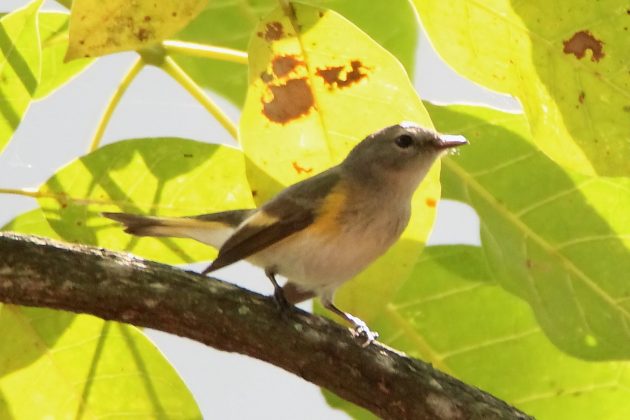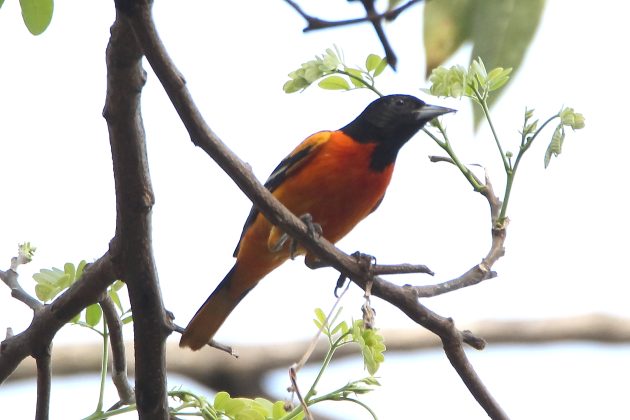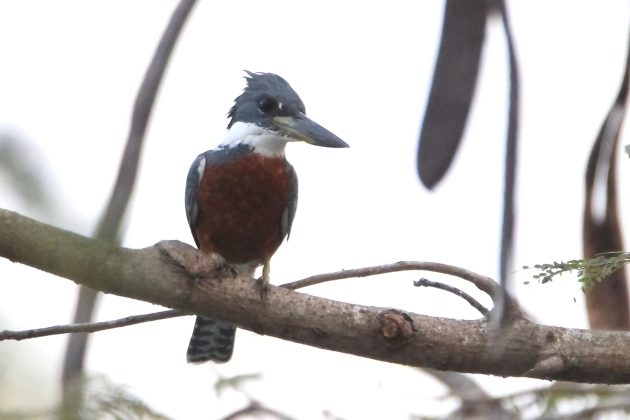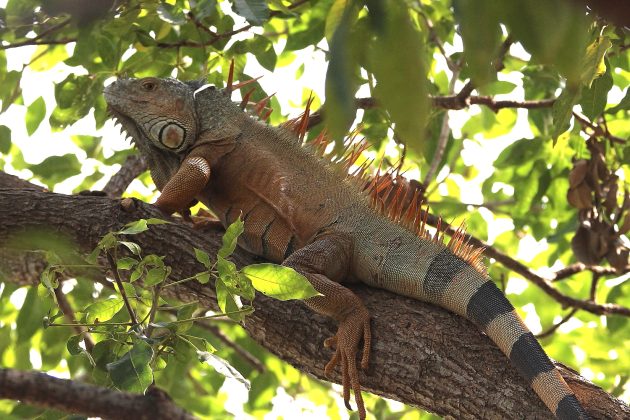Last week I commented that I spent that week teaching at the Presbyterian Southeastern Theological Seminary in the Mexican city of Villahermosa. One of the students there, Eduardo, turned out to be a relatively new, but avid, birder. On Friday we finished early, and I wasn’t traveling home until Saturday. So Eduardo set aside the afternoon to show me some of the city, and take me birding in two city parks.
A gatekeeper looked us over as we left the Seminary.
It was a very humid 99ºF (37ºC) in the early afternoon, so we went to the city’s excellent (and air-conditioned) archeology museum first. Then, around 4:00 p.m., the temperature was just barely starting to drop, so we walked across the street to the city’s “Gunpowder Park” (Parque La Pólvora).
Being a westerner — raised in California, and now living in western Mexico — I was perhaps most excited about the migratory birds that breed in eastern North America. I know of only one place to see a wintering American Redstart in Morelia, where I live. But it is a private property, to which I don’t have access. I photographed the first of only two Northern Parulas ever reported in my state, way back in 2013. But obviously, I haven’t seen one since then. And the Baltimore Oriole is an iconic eastern bird, which winters along Mexico’s east coast, but never in the west. This was only my fourth encounter with the species (all on the east side).



Eduardo, however, was more excited about a couple of western birds that turned up: a male Summer Tanager, stuck between his winter yellow and summer red plumage, and an aptly-named female Western Tanager. He should have visited my home last month, when both species were visiting my birdbath almost daily. (Although, truth be told, this species does seem to be a rarity in Tabasco.)


We were both excited about a Lesser Nighthawk Eduardo spotted sleeping motionless on a tree branch. It was by far my best (and longest) view of this species.

Two other birds, both residents, surprised us. As we gazed upwards at those backlit migratory warblers, I noticed a Bare-throated Tiger-Heron… nesting! This species is relatively common in tropical Mexico, but I certainly never expected to see it nesting in an urban park. And yet, there it was.

And then there was a Green Heron, not only showing us its nest, but also an egg. It felt unethical to photograph a nest from so close. But what could I do? The heron had decided to place its nest only one meter (a yard) from the walkway of a downtown park! I noticed it, froze, took my photo, and then quickly moved away.

After finishing our circuit of Parque la Pólvora, we got into Eduardo’s car and drove a short distance to the Parque Tomás Garrido. This park is on a much larger body of water, and the species showed it. Like the previous park, there were no ducks, coots, or grebes to be seen. But there were great numbers of six kinds of herons, with a supporting cast of Neotropical Cormorants and a single Anhinga. I desperately attempted to get usable photos of the terns flying by, suspecting that at least one was not of the Caspian Tern variety I can easily see near Morelia. Sure enough, a few photos revealed the long yellow bill and dark uppersides on the primary feathers of a Royal Tern. Caspian Terns have a thick red bill, with a grayish forehead in the winter.


All week long, I had admired the Amazon Kingfisher that would visit the Presbyterian Seminary. But I never saw the Ringed Kingfisher that Eduardo told me about. I never saw it, that is, until Parque Tomás Garrido. There it was, giant bill and solid red underparts for all the world to see. It is, apparently, the largest New World kingfisher.

A few featherless creatures helped to make our park visits special. Parque la Pólvora was crawling, literally, with small and large, rather prehistoric-looking, iguanas. I liked their attitude.


The reptiles in Parque Tomás Garrido were of the crocodilian variety. Some were quite large. I’m happy to say that the ones right on the other side of a low wall were not so large.

But this park’s flagship non-birds could be none other than the Coati, a tropical raccoon relative. These have become so habituated that we saw about twenty of them crowding a couple that foolishly fed them a few Cheetos.


Having said all this, I should finish by noting that Villahermosa is not a particularly special city, when it comes to natural habitats. It was special to me, because I come from a different side of Mexico. Still, this sort of wildlife experience is available in pretty much any Mexican city. Which is rather freeing, don’t you think?

A Golden-fronted Woodpecker, or Velazquez’s Woodpecker, depending on your preferred taxonomy.
Source link

